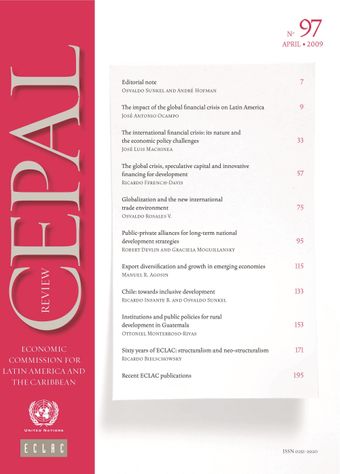-
Institutions and public policies for rural development in Guatemala
- Source: CEPAL Review, Volume 2009, Issue 97, Jul 2009, p. 153 - 169
- Spanish
-
- 27 Jul 2009
Abstract
This article reviews the formal institutional framework for implementing rural development policies in Guatemala, which originated in the State modernization process promoted through the Peace Accords. The main thesis is that rural development policies will be more efficient if they are based on the institutional framework that the Peace Accords provided, which distinguishes between three levels of government: central, deconcentrated and decentralized. While the two sub-national levels execute 43% of total public investment, central government needs to target the budget on poor zones, cut subsidies to the private sector and increase the supply of public goods. At the deconcentrated and decentralized levels, the territorial approach has proven effective in generating policies, but land-use planning needs to be based on political-social covenants between local stakeholders.





